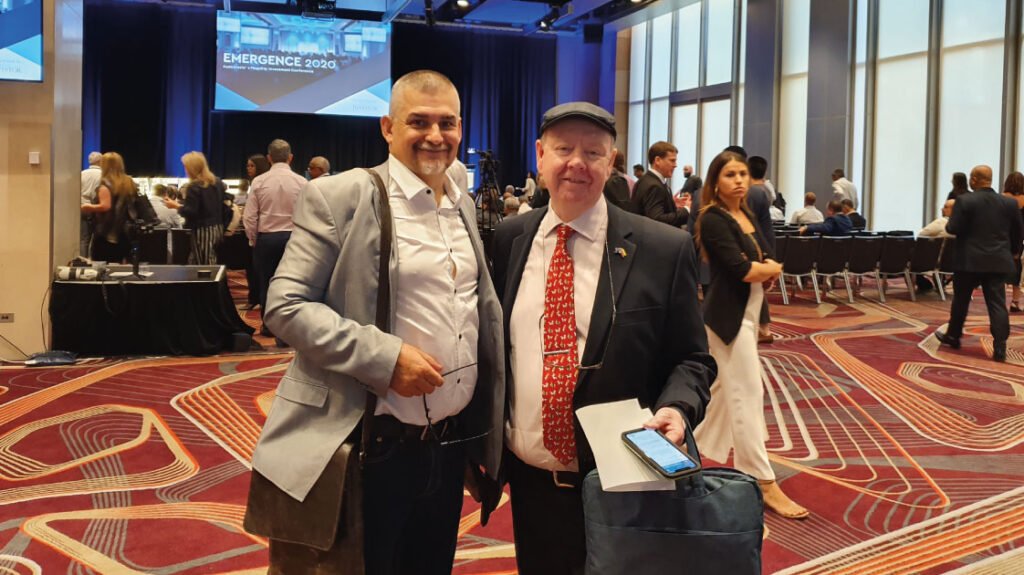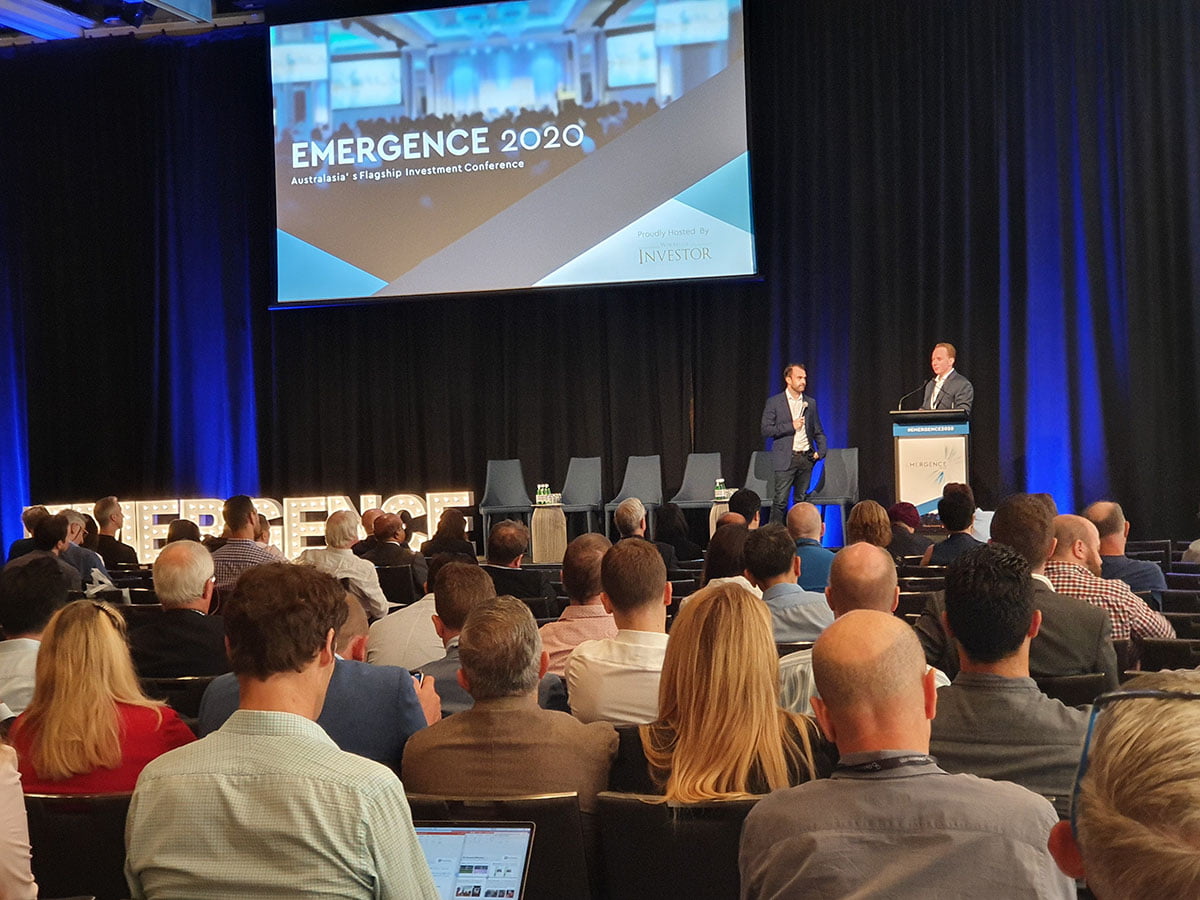Emergence 2020, a broad church in the fin-tech ecosystem
Emergence 2020, a broad church in the fin-tech ecosystem

Recent Posts
My wife Carmenza and I had been looking forward to the Wholesale Investor’s Emergence 2020 conference since we registered in late November 2019. We were not disappointed. A great mix of presentations by leaders, candidates for investment and participants in the ecosystem.
The investment ecosystem consists of a fin tech’s, miners, property developers, agriculture and new banks. A broad church.
For us it was a huge learning opportunity about what is happening across a number of sectors.
The roots of Emergence 2020
Emergence, is becoming an increasingly significant event in the new company ecosystem in Australia. Steve Torso is the face of Wholesale Investor, CRIISP (a fin tech) and events such as Emergence. Over the last 14 years he has created a magazine (“Wholesale Investor”) which linked companies on a journey to an IPO with investors. The magazine was reinvented as a website with events and is currently being transformed into an online service, undoubtedly complemented by events. CRIISP is a SaaS online service which allows a company seeking investors to use it as an archive and allow potential investors different levels of access. CRIISP like the conferences seeks revenue from the investor and the investee.
Wholesale Investor and ground zero
Torso has created around himself an “ecosystem”, as he calls it, or is I see it, a business community. What he has done is linked companies on their journey to investors across Australia but more recently also in Singapore and the United Kingdom. Wholesale Investor annually runs events in Sydney, Melbourne and Brisbane, plus Singapore and London. From what I can see, Emergence remains the premium conference in the suite.
One of the truly attractive aspects of the conference is the conference app. It allows links from the program director to comment on each presentation and, where appropriate, into the CRIISP system. I will be able to use it for weeks to refresh my memory and get the information I am looking for. Yes, we are paperless.
Naturally, one of the reasons we attend conferences is for human interaction. Very few of us would start with A in the CRIISP system and work our way to Z. In reviewing the conference after day three, one of my colleagues said to me it was a wonderful networking opportunity and that he had 60 new business cards. He had seen a number of products in which he believed he could assist.
I must admit I was disappointed at the general quality of or lack of video content verse Emergence 2019. Given the reaction to the coronavirus principally in Singapore, it was not surprising that Emergence 2020 did not have the same level of representatives, investors or speakers coming from Singapore or across Southeast Asia. In 2019 I did meet people from Canada with whom I am still in contact.
.

The Programme
What was interesting to see was the number of companies presenting who are already listed on the Australian or another stock exchange. They continue to see significant value in presenting at Emergence 2020. Each is either planning to raise more capital or creating interest in their shares to see the price rise. I must admit that if I was wanting to look at investing in a biotech or fin tech which is already listed I would be looking for my information elsewhere. To be fair, Emergence 2020 does allow participants to see the quality of the management of these listed companies and to meet with them on the day they presented at least.
The Emergence program is well scripted and whilst it runs slightly behind timetable is a good mix of:
- An interesting morning guest speaker
- a series of sessions showcasing companies
- working tea breaks and lunches which allow attendees to meet showcased presenters at their booths
- panel sessions.
The presenters included David Koch, Mark Bouris and David Hornery or; a financial journalist, a financial services entrepreneur and an electronic banker.
The showcased companies were drawn from:
- Financial services
- property
- mining
- mining services and value adding
- construction
- agriculture
- biosciences.
A number of the companies were already listed; at least two planning to list in the UK. Additionally, a number had their businesses located outside Australia and also did not plan to list in Australia.
Some of the unconventional presentations included Islamic Bank of Australia which is significantly down the pathway to gaining a full banking licence but interestingly it will join the market as another electronic banking services provider.
Given that this year all showcasing occurred in the main arena and presentations were not grouped into themes we found ourselves listening to presentations which we would not have planned to attend. One of these was Students Super/Professional Super. I believe the service has identified a great market opportunity as many professionals begin their lives with part-time jobs, which get paid super, whilst there at university. It is amazingly true that once people have a superannuation account, they tend to be remarkably sticky. It is a great business model.
Learnings
One of the recurring themes of the conference was that the Australian Stock Exchange (ASX) continues to have smaller and earlier listings than are permitted or occur on larger exchanges such as NASDAQ. In very few jurisdictions could you list the company and raise less than a net AUD 4.5 million. An equally noticeable theme from asset holders was that the market in Australia does not recognise or back ideas with billions of dollars. In Australia, many companies take the opportunity to list early as they see it as less dilatory for the founder and the earlier investors. As a consequence of this we see companies list when the product is 80% finished, but making sales, allowing the market to impact on the next iteration of the product. In contrast, private investors, prefer to see a new company remain private until it has a substantially finished product, preferably with a sales history, so they can be listed and a large number and with considerable market hype leading to a significant value gain an IPO.
To our surprise, the professional investors openly spoke in the panel session on have totally different approaches. Some are specialists and others generalists. One professional investor plans to make up to 30 investments per annum and another reported 7 over20 years. Each had different scale, timeline and processes. Most importantly some investors want to coach the founder, sit on the board and one wanted absolute control. Each had different times in the process that they wished to make their investment. If you are introducing a company or founder you need do your homework first or otherwise you may have two unhappy parties.
Conclusion
As stated earlier, for us it was a huge learning opportunity about what is happening across a number of sectors. There were two recurrent themes we need to be looking for; disruptors and we need to be early adopters of change. To our surprise the professional investors have totally different approaches some are specialists and others generalists. One professional investor plans to do 30 investments per annum and another reported 7 over20 years. This made me think.
We also saw some investment opportunities which we think Projects RH can assist.
Steve Torso delivered another wonderful networking opportunity. Sincere congratulations to Steve and his team. We are looking forward to Emergence 2021.






